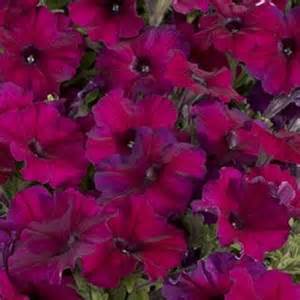 I had the pleasure of spending the last day of February at a regional meeting of the Perennial Plant Association at The Morton Arboretum near Chicago. “Ready, Set, Grow!” was the theme of the daylong symposium, and are we ever!
I had the pleasure of spending the last day of February at a regional meeting of the Perennial Plant Association at The Morton Arboretum near Chicago. “Ready, Set, Grow!” was the theme of the daylong symposium, and are we ever!
I got home all fired up to start some perennials from seed. Growing perennials from seeds is considerably trickier than buying them from the garden center, but it also can be considerably cheaper. And–more fundamentally–it’s a way to get growing in March when there’s still a foot of snow on the frozen ground.
Starting perennial seeds is a perfect use for a greenhouse. It does require some planning and foresight, however. Most perennials won’t flower the first year, like marigolds and sunflowers; they’ll spend their first year as just a clump of leaves, developing a good, big, reliable set of roots, and won’t start blooming for a year or two.
On the other hand, there are long-term rewards. The right perennial in the right spot can live and prosper for year or sometimes decades.
Some perennial seeds are fairly straightforward. I have some heuchera seeds that I plan to sow along with my tomato seedlings and I expect to have seedlings in May. And there are other perennial seeds that would be likely to sprout with few complications: dianthus, salvia, phlox, and sedum, for example.
For many perennial seeds, though, I would have needed to start planning long before March so I could pre-chill the seeds for several months. That’s because if a plant is hardy enough to survive in a temperate climate like the Midwest or the Northeast, its seeds have evolved to expect winter. Usually, they won’t sprout unless they’ve spent enough time in the cold to be sure it’s spring.
To start those seeds indoors, we have to simulate winter by chilling the seeds, a process the professionals call vernalization. The period required varies among species, but it’s most often 10 to 12 weeks. So if you plan to start the seeds in spring, you need to buy them in fall or winter, mix them in a little moist seed-starting mix, place them in a (labeled) small plastic bag, and keep them in the fridge (not the freezer) for three months or so.
I did not get that done. Fortunately, the columbine seeds I did order only need to chill for a month or so. In fact, I could scatter them right over the snow outside and they would likely be ready to sprout by the time it melts and the soil warms a bit.
Other perennial seeds need different treatments. In some species, we need to scratch or nick the seed coat to help the embryo break out. These are seeds that in nature wouldn’t sprout for several years, until time and weather had broken down the seed coat a bit. Other species need to be soaked for several hours before sowing. The seed packet should tell you exactly what to do. (Important rule: Never buy seeds in a packet that does not have copious instructions.)
In general, once you’ve given perennial seeds whatever treatment they need, starting them under lights in the greenhouse or the basement is much like starting vegetable seeds. You need the same sterile pots; the same sterile seed-starting mix; humidity until the seeds sprout; and bottom watering to keep the soil moist. Just as you would with tomato plants, you’ll need to pay attention and keep the lights just above the growing plants so they don’t get leggy. And in May, after the last frost, you’ll need to harden off the seedlings gradually before planting them in the garden.
much like starting vegetable seeds. You need the same sterile pots; the same sterile seed-starting mix; humidity until the seeds sprout; and bottom watering to keep the soil moist. Just as you would with tomato plants, you’ll need to pay attention and keep the lights just above the growing plants so they don’t get leggy. And in May, after the last frost, you’ll need to harden off the seedlings gradually before planting them in the garden.
Perennial seeds often take much longer to germinate than vegetables and annuals, and the germination rate is often lower. So sow extra. If you get lucky and get a good crop, you’ll have perennial seedlings to give away.


